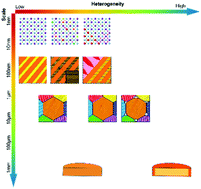Review of chemical modification on potassium sodium niobate lead-free piezoelectrics
Abstract
Piezoelectric materials convert mechanical energy into electric energy, and vice versa. They have been applied in many critical fields, such as motor vehicles, medical devices, the military and aerospace. Recently, the development of lead-free piezoelectrics due to environmental concerns has attracted enormous attention in both scientific and industrial fields. This review summarises the effect of chemical modification on the enhancement of potassium sodium niobate lead-free piezoelectric materials. The origin of the high piezoelectricity is attributed to the construction of phase coexistence and local heterogeneities. The choice of dopants is discussed from the aspects of ionic radius, valency, electronegativity and hybridisation, as well as their influence on thermal stability and fatigue behaviour. An assessment of heterogeneity at different length scales on the piezoelectric performance is provided.

- This article is part of the themed collection: Recent Review Articles


 Please wait while we load your content...
Please wait while we load your content...